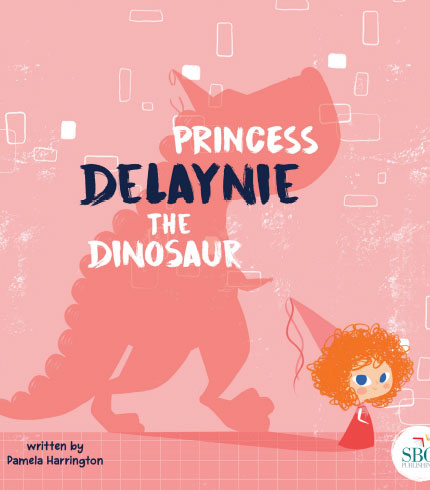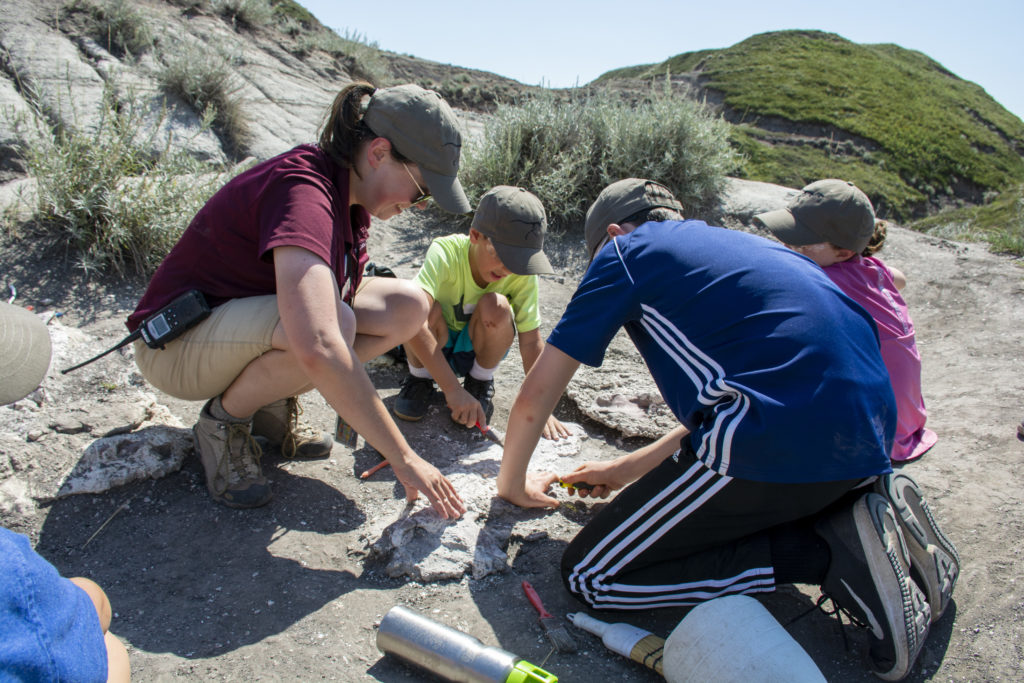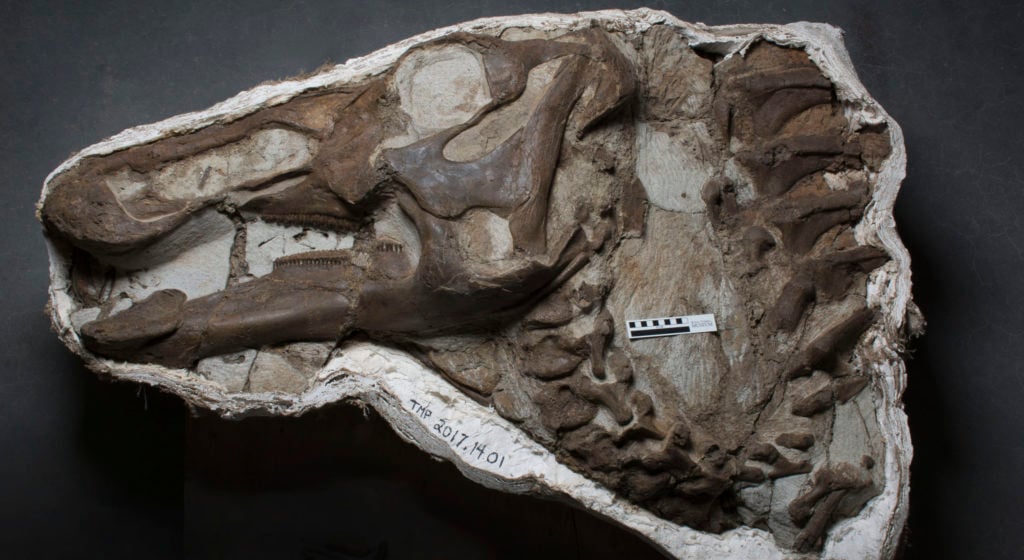By Beth S. Pollak / All Photos Courtesy The Royal Tyrrell Museum of Palaeontology
It’s ‘Animal Adventures’ week at #CampCaribu, and what’s more exciting than learning about some of the world’s most incredible animals of all time: Dinosaurs! Check out the many dynamic dino books featured in this week’s summer reading selection in the Caribu app.


Find books with dino facts and fairytales that you can read together with little ones in a virtual playdate. Which is your favorite dinosaur? What do you like about it?
To learn more, we spoke with some experts from dinosaur museums across the globe! Our Q&A below features Eilidh Macdonald, Science Educator at The Royal Tyrrell Museum of Palaeontology in Alberta, Canada.
Read on to discover exciting facts about prehistoric creatures, and what it’s like to work in the fossil world.
The Royal Tyrrell Museum of Palaeontology, Drumheller, Alberta, Canada
Eilidh Macdonald, Science Educator
1) What makes the Alberta Province and the upper Midwest region distinct for dino hunters?

It’s a semi-arid desert area where you can find lots of dino fossils. We have the right-aged rock for finding the fossils. We have soft, sedimentary rock, with sand, mud and clay sediments.
Sedimentary rocks are formed in specific environments, and in the dinosaur era, the environment here wasn’t a desert. It was probably similar to the Louisiana Bayou or to the Florida everglades; hot, humid, swampy, marshy — a great place for dinosaurs to live.
2) What types of fossils can people find around the upper Midwest?

We have 25 different species of dinos locally. The Edmontosaurus is very easy to find here. It’s a duck-billed dinosaur that roamed in herds and ate lots of plants. We’ll describe it as the cow of the Cretaceous Period.
We had carnivores here, and the main one is Albertosaurus, the older cousin of T. rex. It was a little smaller and skinnier than T. rex, and probably could’ve run faster.
I like finding Ornithomimid. They are the fastest dinosaurs (we think) and they looked like an ostrich, with long necks and long legs. They were covered in feathers, and had no teeth. They were omnivores and ate insects.
3) Which fossils are unique to your collection?

We found the first feathered dinosaur fossils in North America. Feathers are soft and don’t usually turn into fossils like bones and teeth. Usually what we find is feather impressions in the rock surrounding the fossil.
We only tend to find the feather impression in certain parts of Asia, which have the right kind of preservational environment for preserving feathers. We’ve always assumed that a lot of dinosaurs had feathers based on what we’ve seen in Asia.
4) What’s it like to be on a dinosaur dig?

It’s not what you see in the movies. You don’t come across complete dinosaurs. It can be very hot here in the desert, up to 40 degrees Celsius (about 104 degrees Fahrenheit) with no shade.
You uncover dinosaur bones a few at a time. They are so fragile and brittle that you don’t want to break them. You are seeing bones for the first time that these bones have been seen in millions of years. It takes a particular kind of person who’s really into digging up the dinosaurs, with a fair amount of patience.
5) How do paleontologists know where to dig?

Fossil prospecting is the first stage that a paleontologist would take. You’re searching the ground, looking for any bone that is exposed. You’re looking for the bubbly spongy texture that bone has. The bone marrow is the key giveaway that what you’re seeing is bone and not a rock; it takes some practice. Once a paleontologist finds a little piece of bone exposed, that’s when they can start digging around it and uncovering it more.
6) What if kids and families want to go fossil hunting?

In the summer, we run public programming for tourists that come to the area. We go fossil prospecting and teach people how to look for fossils on the ground, and how to safely dig up fossils, although we are not doing that currently because of COVID-19. We normally take families out to a simulated dig in the Badlands. We use the same tools that paleontologists use, we are just not actually digging up bones.
Be mindful of the park laws and the fossil laws of your respective province or state, and follow those laws. The rules are there for a reason, to protect our natural environment and preserve it for generations to come.
7) Why is it important for kids and families to continue learning about dinosaurs and prehistoric life?
There’s still a lot more to discover. We are finding new fossils and new dinosaurs all the time. The more we learn about the fossils of extinct animals and the environment they lived in, the more we learn about how animals today have been shaped by the past. By looking at the causes and effects of extinction events and other events in the past, we can get a better look at how our actions as humans affect the environment.
8) How can families partake in learning from home with your museum?
We’ve had to adjust more recently to make sure that we are following safe cleaning protocols [for COVID-19], but we are still running programming at the museum. We also have a distance learning studio that broadcasts all around the world! Check out the museum website to see the listings of various programs that you can sign up for that can be broadcast into schools or your own home. I’m impressed and relieved at how we’ve been able to adapt and provide families opportunities to learn and entertain themselves here.
Read more about dinosaurs in the Caribu app! Download the app today so you can connect with your loved ones and share some more animal adventures. Learn, play, and color together in your next virtual playdate.
Beth S. Pollak is a writer and educator based in California. In addition to working with Caribu, she consults with educational organizations and EdTech companies. Beth has worked as a teacher and journalist in Chicago, New York, and San Francisco. She holds degrees in journalism, bilingual education, and educational leadership. In her free time, she enjoys hiking, biking, picnics, and dance.


